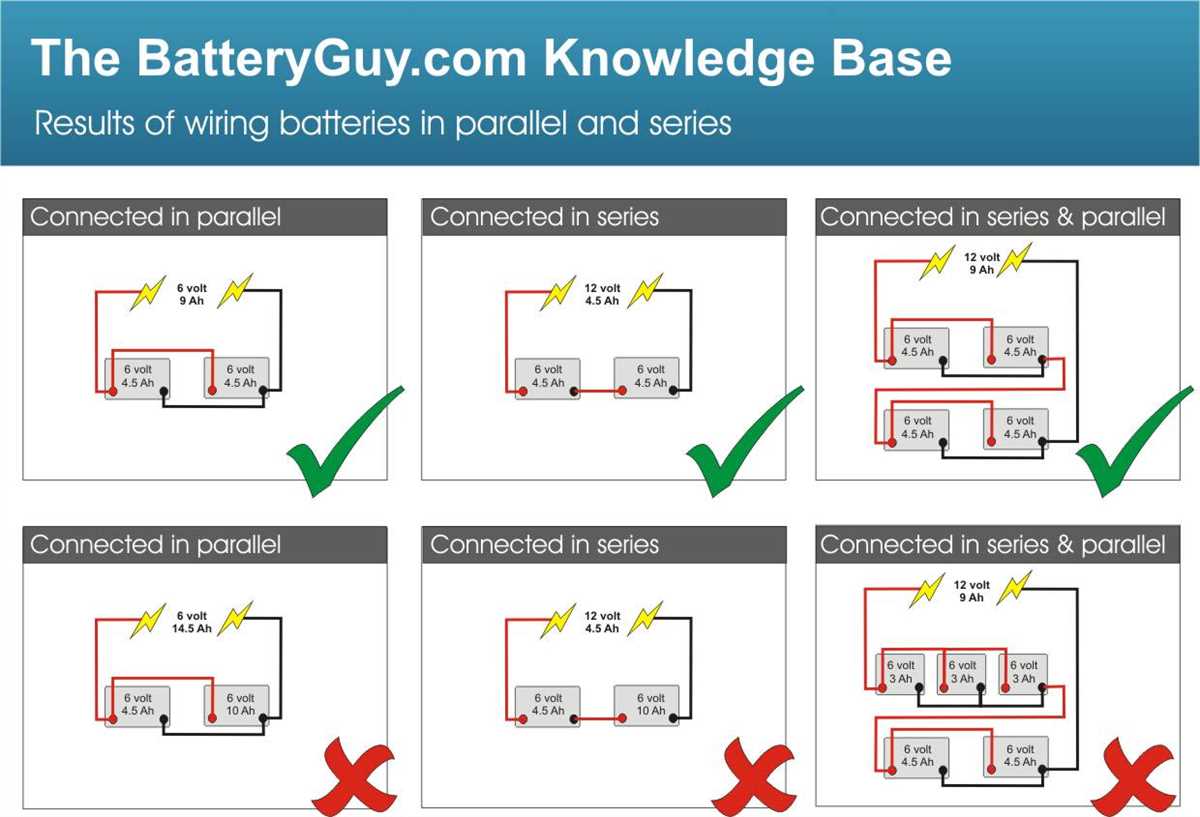
When it comes to powering larger electrical systems or devices, having a reliable source of power is crucial. One way to achieve this is by wiring 12v batteries in parallel. This method allows you to increase your power capacity while keeping the voltage the same. Whether you’re setting up a solar power system, RV, or backup power supply, understanding how to wire batteries in parallel can be a valuable skill.
Wiring 12v batteries in parallel involves connecting the positive terminals of multiple batteries together and the negative terminals together. This configuration allows the batteries to share the load evenly, increasing the overall capacity and ensuring a more stable power supply. By wiring batteries in parallel, you effectively double the amp-hour capacity while maintaining a 12-volt output.
One of the benefits of wiring batteries in parallel is the ability to extend the runtime of your electrical devices. For example, if you have two 12v batteries with a capacity of 100 amp-hours each, wiring them in parallel will give you a total capacity of 200 amp-hours. This means you can power your devices for a longer period of time before needing to recharge the batteries. Additionally, wiring batteries in parallel ensures that if one battery fails or loses charge, the others will continue to provide power.
Wiring 12v Batteries in Parallel
When it comes to wiring 12v batteries in parallel, there are a few important considerations to keep in mind. Parallel wiring involves connecting the positive terminals of multiple batteries together and the negative terminals together, effectively combining their voltage. This configuration is commonly used to increase the overall capacity and runtime of a battery bank.
One crucial aspect to consider is the amp-hour (Ah) rating of the batteries. When wiring batteries in parallel, it is important to use batteries with the same amp-hour rating to ensure equal distribution of the load. Mixing batteries with different amp-hour ratings can lead to imbalanced charging and discharging, reducing the overall efficiency and lifespan of the battery bank.
In order to wire batteries in parallel, you will need appropriate cabling and connectors. It is important to use cables with sufficient gauge thickness to handle the current flow. The cables should be securely connected to each battery’s terminals, ensuring a tight and reliable connection.
Another aspect to consider is the overall capacity and runtime of the battery bank. When wiring batteries in parallel, the capacity of the bank is increased, allowing for longer periods of power supply. This can be beneficial in applications such as off-grid solar systems, RVs, or boats, where a consistent and reliable power source is required.
In summary, wiring 12v batteries in parallel involves connecting their positive terminals together and their negative terminals together. It is important to use batteries with the same amp-hour rating and to ensure secure and appropriate wiring connections. This configuration allows for increased overall capacity and runtime, making it suitable for various applications requiring a reliable power source.
Benefits of Wiring 12v Batteries in Parallel
Wiring 12v batteries in parallel offers several benefits that make it a popular choice among individuals and industries. When batteries are wired in parallel, the positive terminals are connected to each other, as well as the negative terminals. This allows the batteries to work together as a single unit, providing increased capacity and overall performance.
One of the main benefits of wiring 12v batteries in parallel is the increased storage capacity. By combining multiple batteries together, you effectively multiply the ampere-hour (Ah) rating, resulting in a higher overall capacity. This is particularly useful in applications where a larger power supply is required, such as RVs, boats, or off-grid solar systems.
- Extended runtime: Wiring batteries in parallel increases the runtime of the system. With more batteries working in unison, the overall energy storage capacity is enhanced, allowing for longer periods of continuous operation without the need for recharging.
- Improved reliability: Parallel wiring also enhances the reliability of the system. If one battery fails or loses charge, the other batteries can compensate for the loss, ensuring uninterrupted power supply. This redundancy is particularly important in critical applications, such as emergency backup systems or medical equipment.
- Fast charging: Wiring batteries in parallel allows for faster charging times. When connected together, the batteries share the charging current, which reduces the time required to fully charge the battery bank. This is advantageous in situations where quick charging is desired, such as in electric vehicle charging stations or renewable energy systems with intermittent power sources.
- Flexible configuration: Parallel wiring offers flexibility in battery configuration. It allows for mixing and matching different types, sizes, or brands of batteries, as long as they are of the same voltage. This flexibility provides more options when designing a system and allows for easy expansion or replacement of individual batteries.
In conclusion, wiring 12v batteries in parallel offers several benefits, including increased storage capacity, extended runtime, improved reliability, fast charging, and flexible configuration. These advantages make parallel wiring a popular choice for various applications that require a larger power supply and enhanced performance.
Materials Needed for Wiring 12v Batteries in Parallel
When wiring 12v batteries in parallel, there are several materials that you will need to ensure a successful and safe installation. These materials include:
- 12V Batteries: You will need two or more 12V batteries to wire them in parallel. Make sure the batteries are the same voltage and type.
- Battery Cables: High-quality battery cables are required to connect the batteries together. These cables should be thick enough to handle the current without overheating.
- Battery Terminal Connectors: Terminal connectors are used to connect the battery cables to the battery terminals. Make sure to choose connectors that are compatible with your battery type.
- Wire Crimpers: Crimping tools are necessary to securely attach the battery terminal connectors to the battery cables.
- Wire Strippers: Wire strippers are used to remove the insulation from the ends of the battery cables, allowing for proper connection.
- Fuse Holder: Installing a fuse holder is recommended to protect the batteries and prevent damage from overcurrent.
- Fuses: Select the appropriate fuses for your system to ensure proper protection.
- Battery Box or Enclosure: A battery box or enclosure is needed to house the batteries and protect them from the elements.
Having these materials on hand will ensure that you have everything you need to safely and effectively wire 12V batteries in parallel. It’s important to follow proper safety precautions and guidelines while handling batteries and working with electrical systems.
Step-by-Step Guide on Wiring 12v Batteries in Parallel
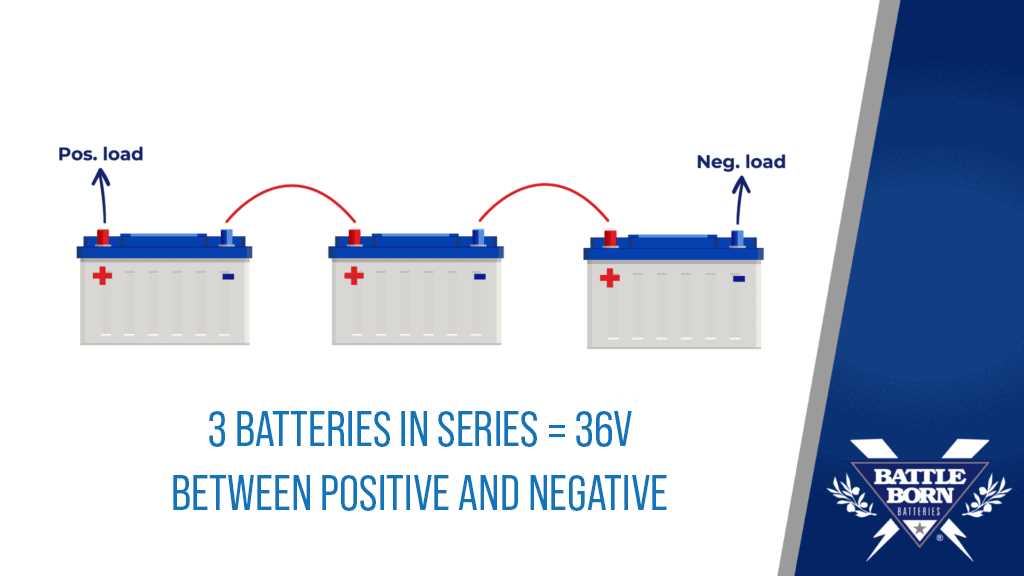
Wiring 12v batteries in parallel is a common practice when you need to increase the capacity or runtime of a battery bank. By connecting multiple batteries together, you can achieve a higher overall capacity while maintaining a 12-volt output.
To wire 12v batteries in parallel, follow these steps:
Step 1: Gather the Necessary Materials
Before you begin, make sure you have all the necessary materials. You will need two or more 12v batteries, battery cables, a battery charger, and a battery isolator or switch. It is also important to ensure that the batteries are of the same type and voltage rating.
Step 2: Determine the Battery Connection Method
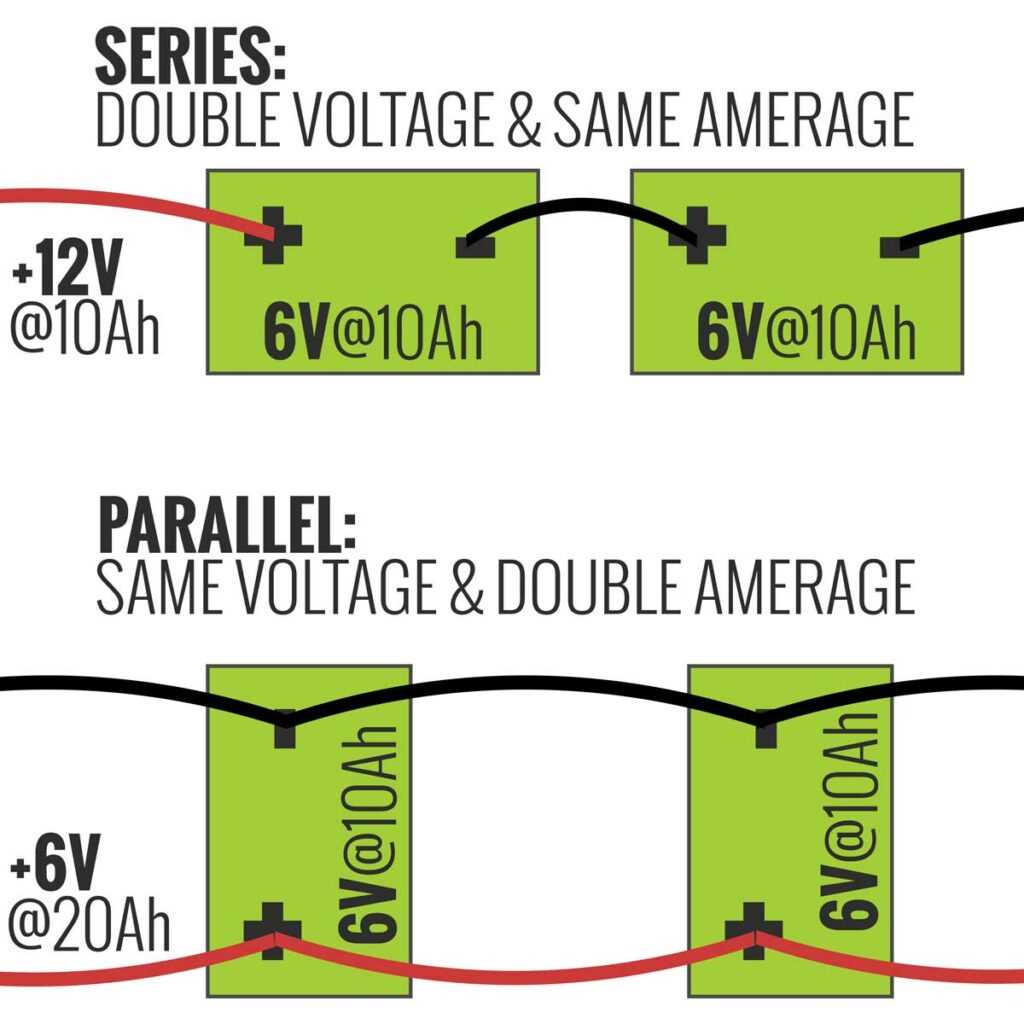
Decide on the battery connection method that suits your needs. There are two common methods: series and parallel. In this guide, we will focus on wiring 12v batteries in parallel, which involves connecting the positive terminals together and the negative terminals together.
Step 3: Prepare the Batteries
Before connecting the batteries, ensure they are fully charged and disconnected from any power source. Inspect the batteries for any signs of damage or corrosion and clean them if necessary. It is also a good idea to label each battery to keep track of their respective connections.
Step 4: Connect the Batteries
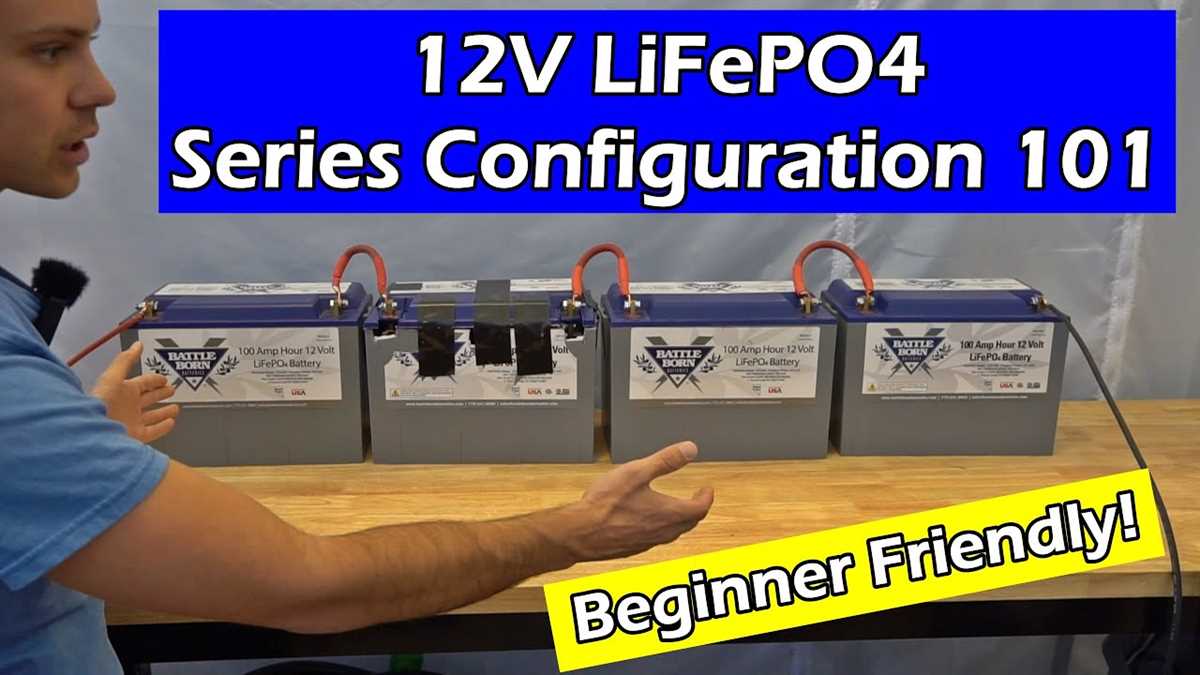
Using battery cables, connect the positive terminal of one battery to the positive terminal of the next battery. Repeat this process until all the batteries are connected in parallel. Then, connect the negative terminal of one battery to the negative terminal of the next battery, following the same sequence.
Step 5: Install the Battery Isolator or Switch
If required, install a battery isolator or switch to control the flow of power in and out of the battery bank. This can help optimize charging and prevent battery drain.
Step 6: Test the Connection
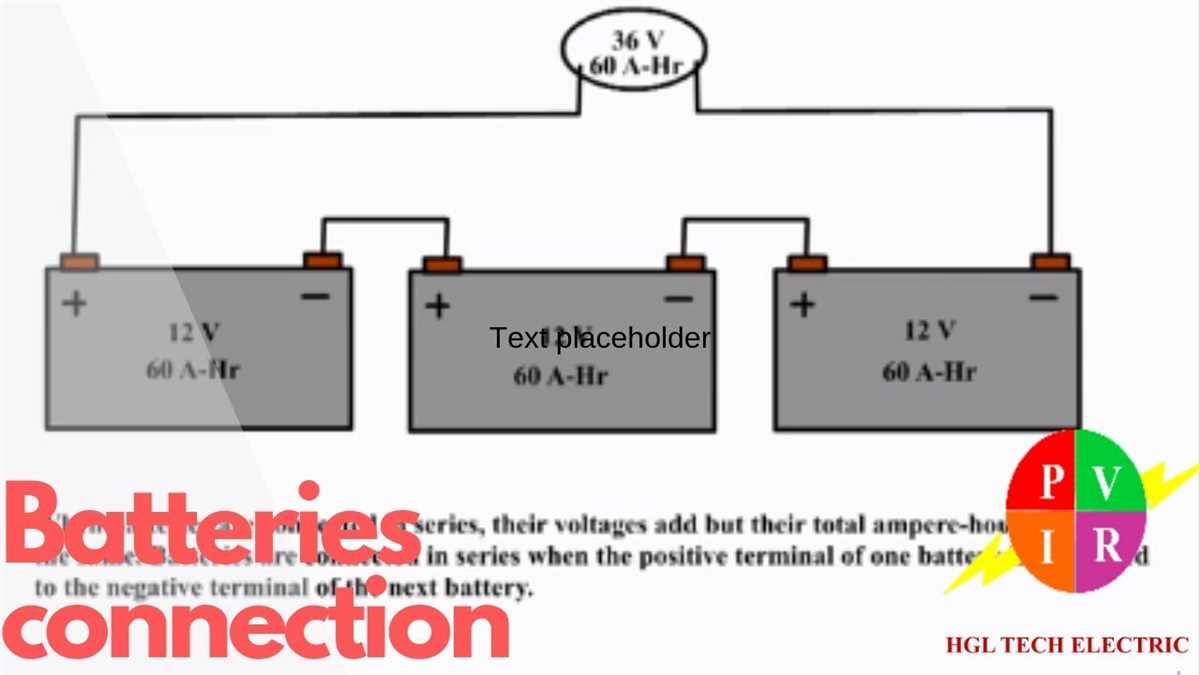
After completing the wiring, double-check all the connections to ensure they are secure and tight. Then, test the connection by connecting the battery bank to a load or device. Verify that the voltage remains at 12 volts and that the battery bank operates as expected.
By following these steps, you can successfully wire 12v batteries in parallel and increase the capacity or runtime of your battery bank. Always prioritize safety and follow proper procedures when working with batteries.
Tips and Precautions for Wiring 12v Batteries in Parallel
When it comes to wiring 12v batteries in parallel, there are a few important tips and precautions to keep in mind. This configuration involves connecting the positive terminal of one battery to the positive terminal of another battery, and similarly connecting the negative terminals. Here are some guidelines to ensure a safe and effective wiring process:
1. Choose batteries of the same type and capacity:
It is essential to use batteries of the same type and capacity when wiring them in parallel. This ensures that the batteries have similar voltage and capacity characteristics, allowing them to work together effectively. Mixing batteries of different types or capacities can cause imbalances and lead to reduced performance or damage to the batteries.
2. Use appropriate wiring and connectors:
When wiring batteries in parallel, it is important to use appropriate wiring and connectors that can handle the required current. Make sure to use cables with sufficient gauge to handle the combined current of the batteries. Also, use high-quality connectors that provide secure and reliable connections to minimize the risk of voltage drop and overheating.
3. Ensure proper polarity:
Double-check the polarity of the batteries before making connections. Connecting batteries with reversed polarity can result in short circuits and damage to the batteries or connected devices. It is recommended to label the positive and negative terminals of each battery to avoid any confusion during the wiring process.
4. Monitor battery temperatures:
When wiring batteries in parallel, it is important to monitor their temperatures regularly, especially during charging and discharging. If any of the batteries become excessively hot, it may signal an issue such as overloading or internal problems. Take immediate action to address the problem, as high temperatures can shorten the lifespan of the batteries or cause them to fail.
By following these tips and precautions, you can wire 12v batteries in parallel safely and effectively. This configuration can be useful in various applications, such as increasing the overall capacity of a battery bank or powering high-demand devices. Remember to always prioritize safety and use caution when working with electrical components.
Common Mistakes to Avoid When Wiring 12v Batteries in Parallel
Wiring 12v batteries in parallel can be a convenient and efficient way to increase the overall capacity and reliability of an electrical system. However, there are several common mistakes that people often make when attempting to wire these batteries in parallel. Avoiding these mistakes is crucial to ensure the safety and effectiveness of the setup.
1. Using Batteries with Different Capacities or States of Charge
When wiring 12v batteries in parallel, it is essential to use batteries that have similar capacities and states of charge. Using batteries with different capacities can result in an uneven distribution of charge, leading to reduced overall capacity and potential damage to the batteries. Similarly, connecting batteries with different states of charge can cause an imbalance in the charging and discharging process, reducing the lifespan and performance of the batteries.
2. Incorrect Wiring Connections
Another common mistake is making incorrect wiring connections. It is crucial to ensure that the positive terminal of one battery is connected to the positive terminal of the next battery, and the same goes for the negative terminals. Making incorrect connections can result in short circuits, power loss, and potential damage to the batteries.
3. Neglecting to Use Battery Connectors
Using appropriate battery connectors is essential for secure and reliable connections. Neglecting to use battery connectors or using inadequate connectors can lead to loose connections, increased resistance, and potential electrical arcing. This can cause power fluctuations, overheating, and even fire hazards.
4. Overloading the Batteries
Another mistake to avoid is overloading the batteries. It is crucial to calculate the total load and ensure that the combined capacity of the wired batteries can handle the load. Overloading the batteries can result in reduced performance, shorter lifespan, and potential damage.
5. Lack of Proper Ventilation
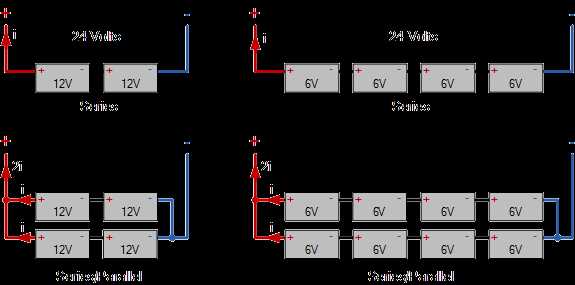
Proper ventilation is often overlooked when wiring 12v batteries in parallel. Batteries generate heat during charging and discharging, and adequate ventilation is crucial to dissipate this heat and prevent overheating. Neglecting proper ventilation can lead to reduced battery performance, increased risk of damage, and potential safety hazards.
Summary
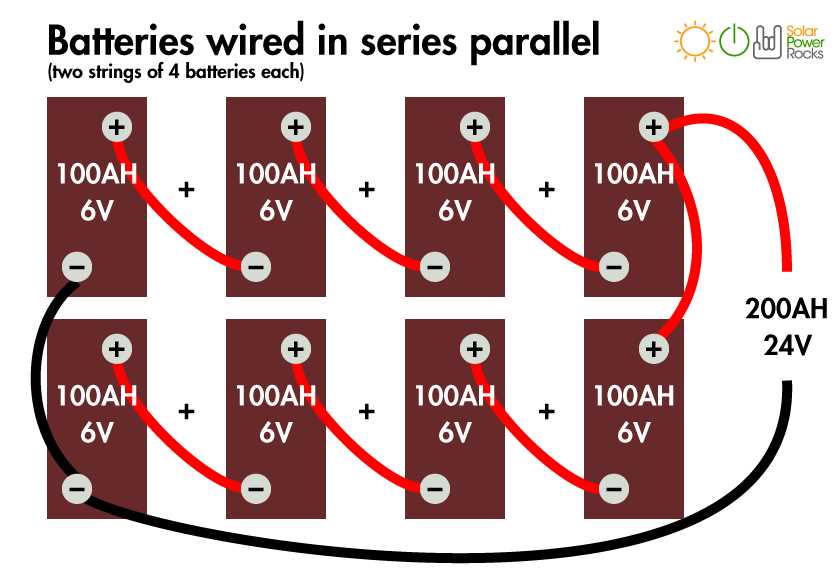
When wiring 12v batteries in parallel, it is important to avoid common mistakes such as using batteries with different capacities or states of charge, making incorrect wiring connections, neglecting to use battery connectors, overloading the batteries, and lack of proper ventilation. By avoiding these mistakes, you can ensure a safe and efficient setup that maximizes the capacity and reliability of your electrical system.